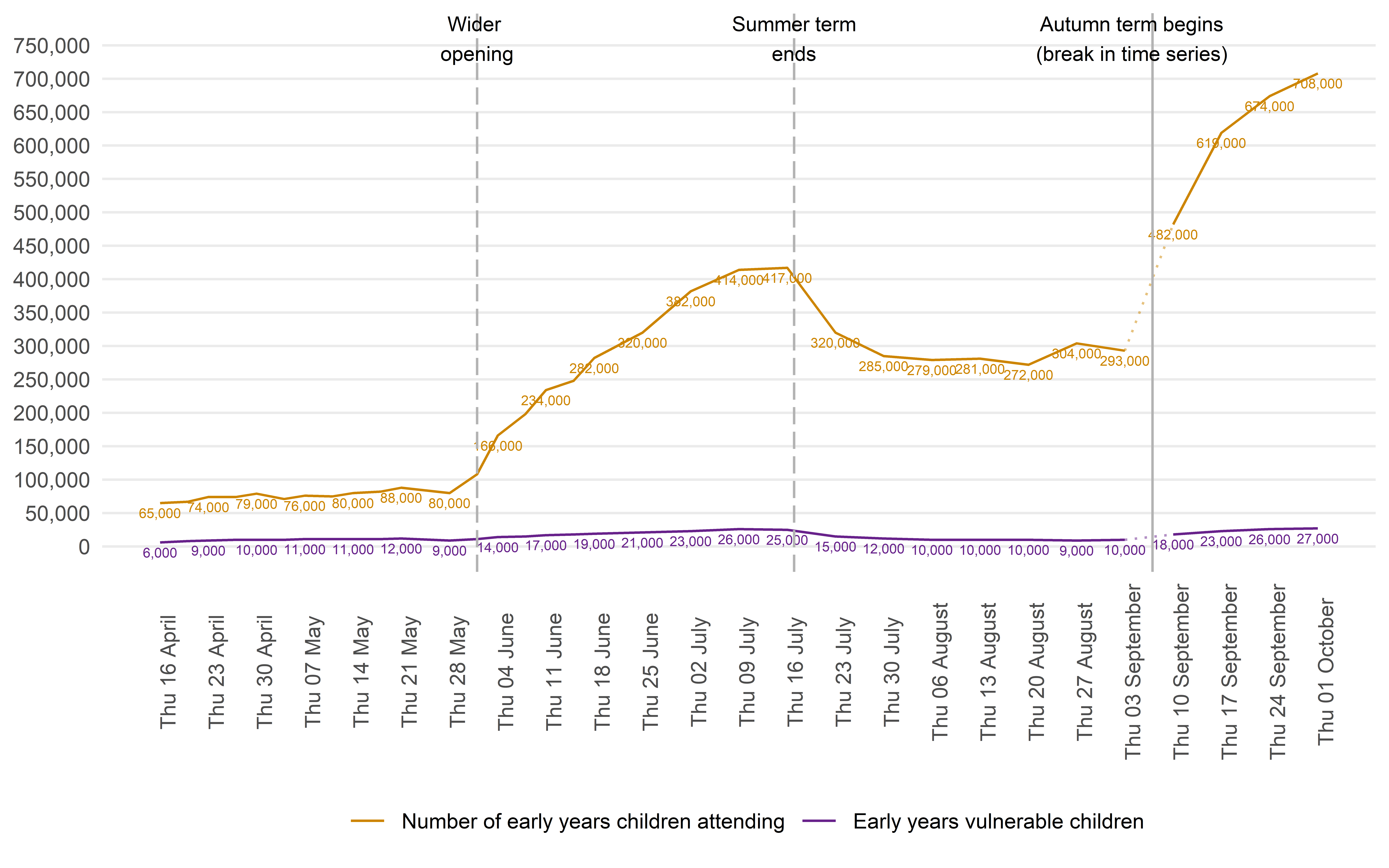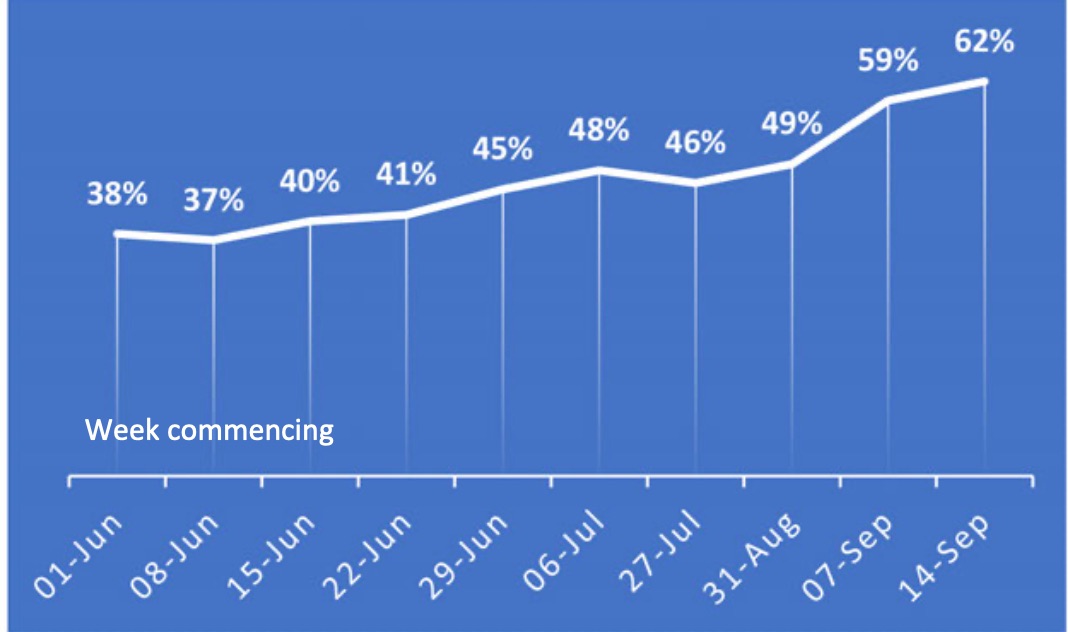
Weekly statistics published by the Department for Education (DfE) show that there were 708,000 children in early years settings on 1 October, 54 per cent of children who usually attend childcare in term time.
Th number is up from 24 September which found that 674,000 children were in settings.

Source: Department for Education, Attendance in education and early years settings during the coronavirus (COVID-19) outbreak (6 October)
An estimated 53,000 early years settings were open on 1 October. This represents 77 per cent of all settings, with 12 per cent closed and 11 per cent unknown. The percentage closed may include some providers which are open, due to differences in the ways local authorities collect data and report non-responses. The DfE said it was currently reviewing this.
The response rate to the early years local authority survey was 93 per cent, with 140 out of 151 LAs submitting data on 1 October.
The volume and percentage of children in attendance from 10 September is not directly comparable with the previous data points due to a break in the time series, the DfE said.
The number of children eligible for funded childcare increases through the academic year as children turn three and decreases in the autumn when children move to Reception.
Occupancy
Separate research from Ceeda's About Early Years Covid-19 Tracker has found that average occupancy increased by 3 percentage points on the previous week, to 62 per cent.
Average PVI nursery and pre-school occupancy levels: all ages

Source: Ceeda, About Early Years Covid-19 Tracker (14 September)
This data is based on a survey of the operations of 338 nursery and pre-school settings in the week starting 14 September, with 335 of them open and three temporarily closed.
The vast majority of settings (99 per cent) were open for families with just 1 per cent temporarily closed due to low demand and/or concern over health risks.
As in previous weeks of the survey, there was wide variability in occupancy levels across settings. More than one in ten had occupancy below 36 per cent and 16 per cent had high levels of 86 per cent or more.
The average number of children attending settings in the study week was 44.7, up slightly on the previous week.
A total of 14,929 children attended surveyed settings. Two settings reported positive Covid-19 tests for one child. Five settings reported positive tests for one member of staff.
Childminders
A total of 354 childminders gave feedback on their provision for the week commencing 14 September.
The proportion of childminders open to families dropped marginally to 94 per cent, 6 per cent were temporarily closed.
Low demand (six) and concerns about the health risks to children (one), parents (one) and self or family (five) were the main reasons for temporary closure. Most expected to reopen in September (nine) or October (four), the remainder were unsure of their plans.
Occupancy fell slightly on the previous week by 1 percentage point to an average of 42 per cent. The average number of children on roll and attending settings in the study week increased to 6.73.
A total of 2,073 children attended surveyed settings. One setting reported a positive Covid-19 test for one child.








